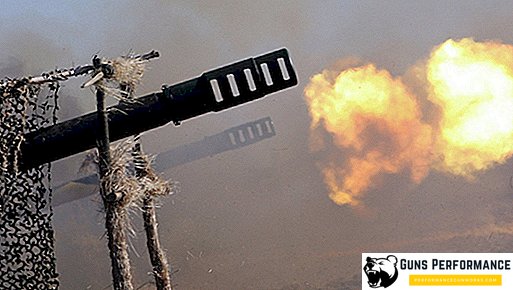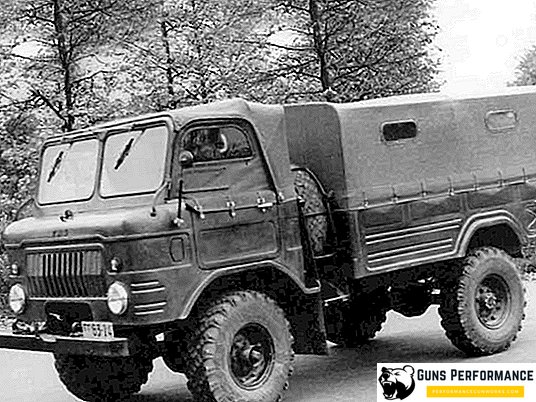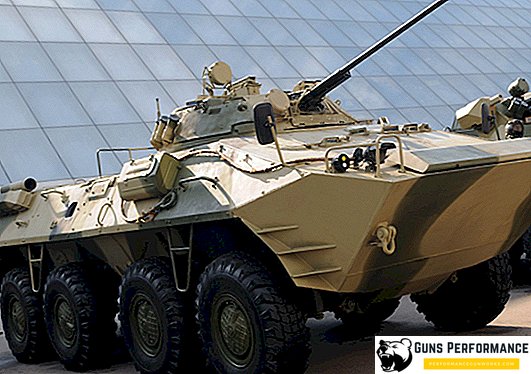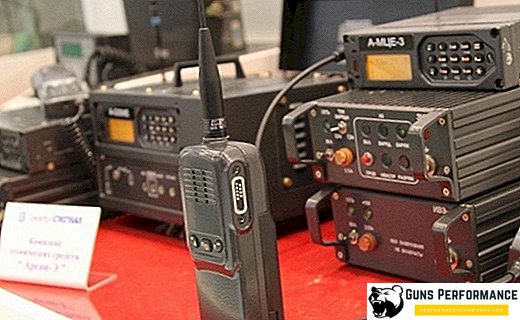Berdanka - the name of two legendary rifles, the development of which began in the 19th century. The gun was fed with unique for its time ammunition and was in service with the army of the Russian Empire. Caliber - 4.2 in Russian calculation and 10.67 mm in international.

The history of the rifle
The first weapon of this series was developed by American engineer Hiram Berdan, the hero of the American Civil War. The mechanism is based on a flap and a forward movement trigger. The first model in practice showed several drawbacks: poor resistance to elevated levels of humidity, unstable work of the drummer, poor closure of the shutter with carelessness of the owner.
The Russian version appeared after a business trip of two Russian officers (Alexander Gorlov and Karl Gunius) to America. In the first version, they made 25 changes, adapted to the caliber 4.2. Especially for her created ammunition with a seamless sleeve.
In 1868, the government of the Russian Empire decided to put a gun into service with the national army. Berdanka was the main weapon of rifle units - light infantry, which operated separately from the main system and did not contact with the enemy in melee combat. During the Russian-Turkish war, 37,000 guns of this type were used.

In 1870, the second generation of the rifle appeared. Berdan came to St. Petersburg to improve his brainchild and installed a longitudinal sliding bolt on the weapon. Russian experts have completed the rifle, making about 15 changes. On its basis, several modifications were produced, the most popular of which are the dragoon rifle and cavalry carbine.
By 1877, the overwhelming number of guns in the Russian army were replaced with rifles of the new modification. Despite this, many units continued to use obsolete guns. The number of copies produced was enough to arm all units, but they remained in warehouses. In the first months of the war with Turkey, time-tested weapons were used, with which the military practiced for at least a year. In 1878 more than 20 divisions were equipped with Berdanka.

Device and principle of operation
The carbine is powered by ammunition 10.75x58 mm R. The work is based on a sliding bolt. It moves on a special axis, which leads to its opening and locking the barrel. Operated by a lever that is attached to it. To lock the barrel bore, you need to turn the bolt of Berdanka from left to right until it stops. For extracting the cartridge case cartridge is the extractor. When the barrel is locked, a new cartridge is sent to the chamber and the old one is thrown out. In the process of operation of this mechanism, the drummer is cocked, which is responsible for the ignition of the charge cap.
The stock can be of two types - from walnut or birch. Rings are used to fasten the barrel and forearm. If necessary, they can be decompressed. Weight carbine - 4.6 pounds with a bayonet. In some, the modification of the bayonet was replaced with a cleaver.
At the time, this gun was the first to use the system of a longitudinally sliding gate and powered by metal charges. At the time of arming the European army, it was considered innovative. Popular rifle used to the end of its release, which occurred at the time of the appearance of the magazine rifles, which differed cartridges of smaller caliber and smokeless powder.

The main disadvantage of the rifle was the low reliability of the shutter. Locking was carried out on one combat stop at 45 degrees. Inaccurate treatment led to his departure back, which resulted in the owner’s injuries. This could happen with heavily worn mechanisms. Most of all harm was received by amateurs who acquired a hunting rifle, converted from a combat Berdanka.
The second minus is the cock squad. Unlike modern systems, it was carried out by the shooter himself by taking back and forth. This led to the need to build in the design of a weak mainspring, which required a sensitive primer from ammunition. This led to unstable operation at low temperatures, if the parts were covered with a thick layer of lubricant.
The weaknesses included the work of the fuse. Some versions suffered a fallout of the shutter with a strong mechanical effect. Fix this deficiency planned in the late 70s of the 19th century. But this did not happen because of the war with Turkey, after which the forces of developers were thrown on the design and production of shop weapons.

Application history
Serial production of berdank began in 1871. For several years, she ousted many obsolete models from service. In 1891, the production of shop-guns began, which did not prevent the carbine from being in demand. The history of this rifle was completed at the beginning of the 20th century, when a Mosin rifle with store equipment came to replace it. At the end of the 19th century, recycled models were sold to civilians for hunting.
In 1910, a plan was developed for the removal of large stocks of Berdanka in order to make room in military depots. There, by that time, more than 800 thousand Berdans had accumulated with a huge number of cartridges. The first half was sent into service with the militia. The second half was put into circulation hunting rifles and recycling for metal processing.
But Berdanka still returned to service in the First World War. The government had to return to the use of old weapons due to the lack of carbines and rifles of new systems. Until 1920, rural militia units were supplied with proven American weapons. Until 1930, foresters used the Berdanka.

Berdanka was widely used by other countries:
- Bulgaria received the first installment in 1878. In 1912 she was delivered a large series of 25 thousand copies. Then they were equipped with militias. During the First World War, a little more than 54 thousand pieces were used;
- Serbia in 1890 received 76 thousand copies. The entire party was used by the army during the First World War;
- Montenegro in 1895 received 30 thousand pieces. Additionally, 30 million charges were delivered;
- Ethiopia received 30 thousand copies on the eve of the war with Italy. 5,000,000 ammunition was supplied to them;
- Austria-Hungary seized several parties during the First World War. In the hostilities were not used, but spread as captured weapons.
Wide demand worldwide was due to a reliable and simple design, which took a little time to maintain even in field conditions.

Conclusion
Berdanka is a legendary weapon with a rich history that brought the Russian Empire and the Soviet Union considerable benefit during times of military operations. In the United States, after the design was finalized by Russian specialists, it began to be called the “Russian rifle”. The export of large lots brought our state a big profit, which was spent on improving the military industry.
Now it is difficult to meet a hunter using this carbine. Berdanka today is kept as the pride of the collection. Parts for the repair of this rifle are difficult to find, so there is no practical use for it. Now she is on a well-deserved rest.












